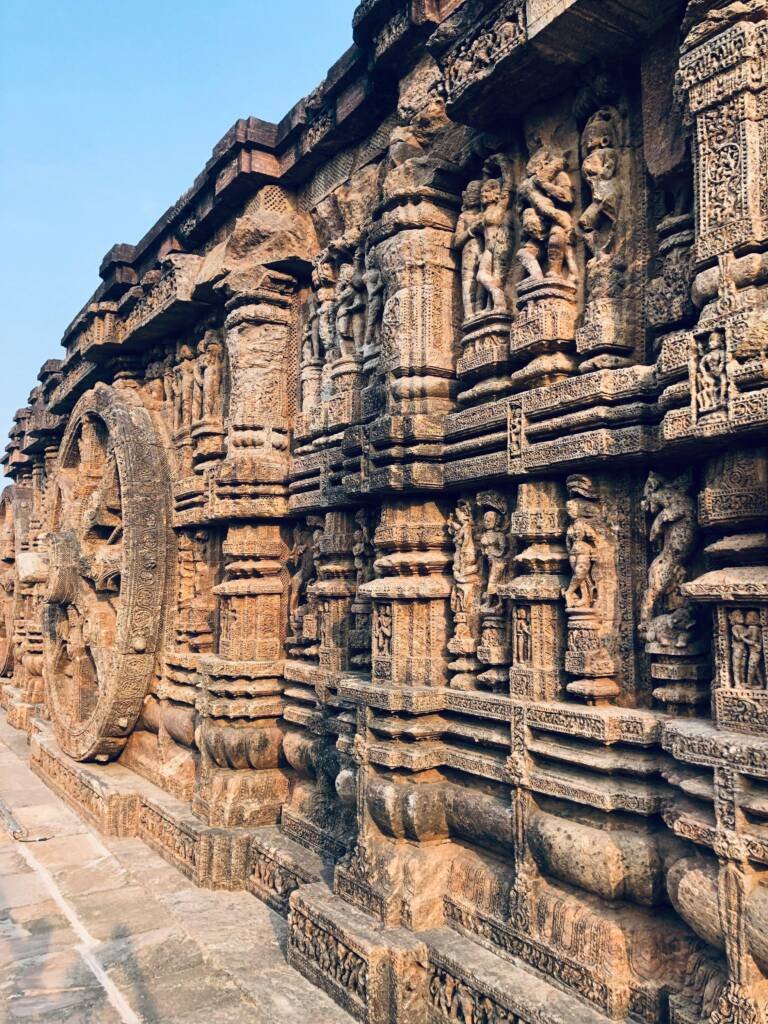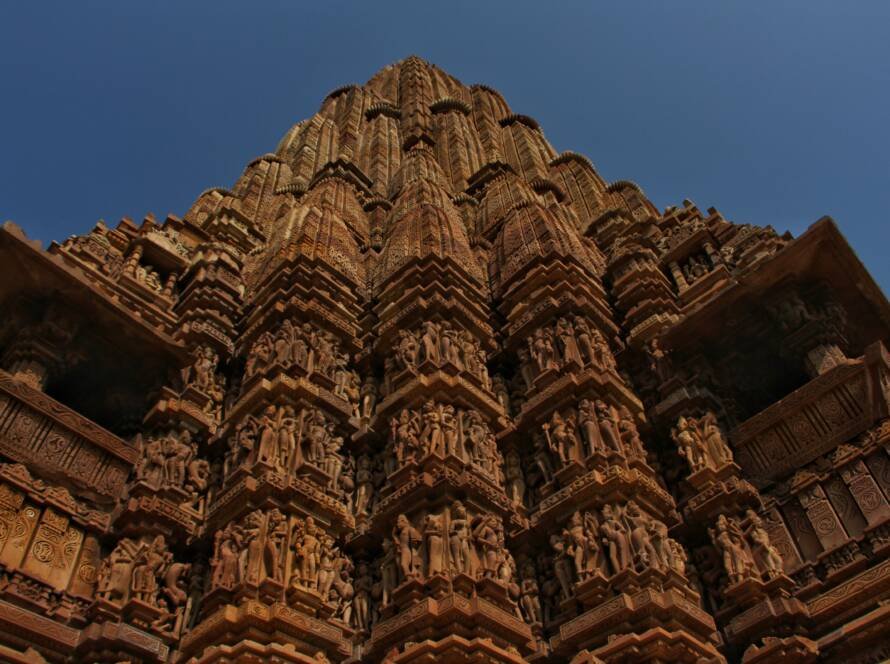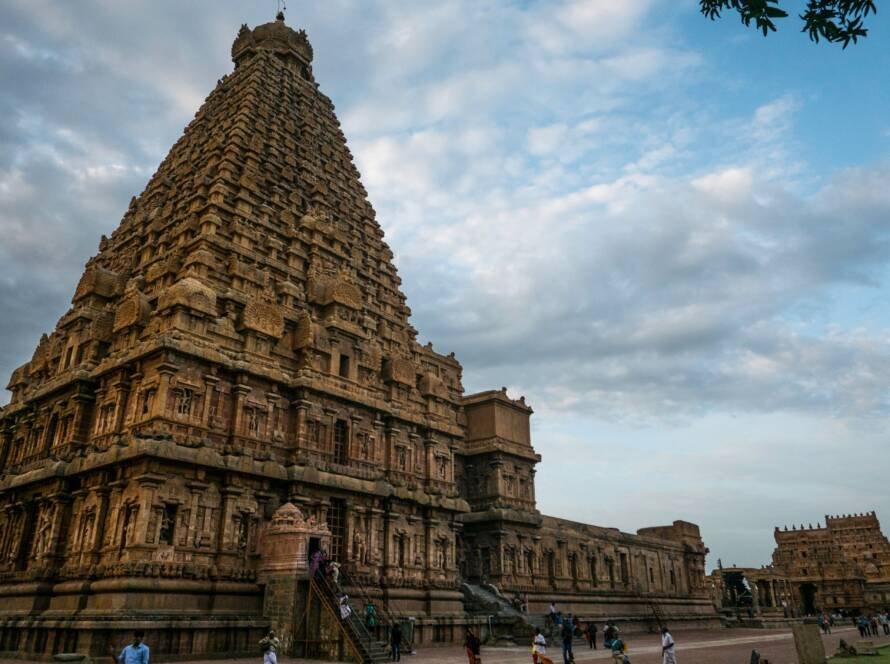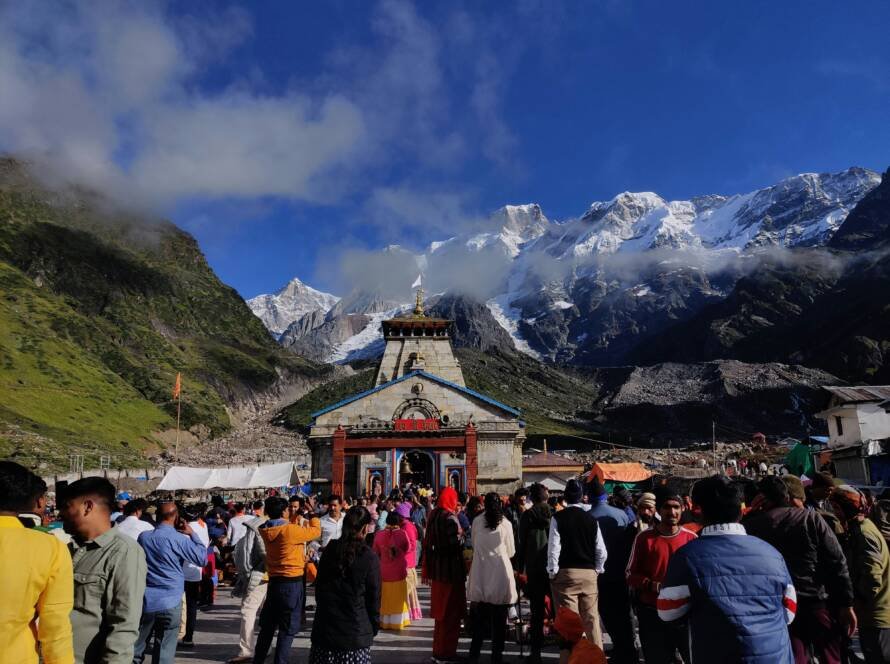Where stone speaks and walls whisper the soul of India
Step into the courtyard of any ancient Indian temple, and you will find yourself enveloped by a quiet reverence—not from priests or rituals, but from the stones themselves. The walls, pillars, ceilings, and sanctums speak a language beyond words—etched in the gentle curves of sculpted deities and painted stories that shimmer in fading hues. These temple murals and sculptures are not mere decorations; they are timekeepers, storytellers, spiritual companions. They hold the breath of centuries and invite us to listen.
Art as Archive: The Living Library of Civilisation
Before history was chronicled in books, it was carved in stone and painted on walls. Every sculpture in a temple tells a story—not just of gods and legends, but of the society that created them. The sensual elegance of the Chola bronzes, the cosmic geometry of Khajuraho’s sculptures, the rich narrative murals of Kerala’s temples—all reflect the aspirations, fears, philosophies, and aesthetics of their times.
Through these works, we see a civilization’s conscience: how it perceived virtue, power, beauty, devotion. A dancing Shiva was not just divine ecstasy—it was a metaphor for cosmic rhythm. The intricate mural of Arjuna aiming at the eye of the fish wasn’t just about marksmanship—it was about focus, dharma, and destiny. These visuals are our history—not recorded, but remembered.


Sacred Hands: The Devotion of the Artisan
The creators of these marvels often remain nameless. Yet their souls live on in every chisel mark and pigment stroke. Temple art was never about personal fame—it was an offering. The sthapathi (sculptor) and chitrakar (painter) were trained not only in technique but in philosophy, iconography, mathematics, and devotion. The result? Each form adheres to cosmic proportion, each color vibrates with symbolic energy, and each figure, however still, pulses with life.
In Tamil Nadu, the granite Nataraja dances not with muscle, but with meaning. In the temples of Hampi, narratives unfold with cinematic precision—villagers gathering, warriors marching, celestial beings hovering. In Kerala’s Guruvayur temple, mural paintings glow in quiet meditative beauty, echoing the inner serenity of bhakti.
Walls that Breathe: A Spiritual and Social Mirror
Temple murals and sculptures reflect the seamless blend of the sacred and the secular. They are not aloof or detached. Look closer and you’ll find court dancers, village festivals, love in all its tender forms, scenes of daily life rendered with affection and humor. The gods here are not unreachable—they share space with the people, in joy and in sorrow.
This interplay gave temples their timeless power—they were not just spaces of worship, but centers of community, learning, and imagination. They brought the cosmos closer, and in doing so, reminded humans of their own divinity.
Why It Still Matters: The Soul’s Silent Language
In a world racing toward artificial speed and digital forgetfulness, these ancient artworks stand like wise elders—rooted, patient, quietly radiant. They remind us that true learning is immersive, that stories live not just in text, but in touch, gaze, and silence. They invite today’s learners—be it children or scholars—to feel history, not just study it.
More than cultural heritage, these temple artworks are emotional heritage. They are the lullabies of a civilization, the brushstrokes of faith, and the sculpture of identity. And in their presence, we remember—who we were, who we are, and who we might become.
Listening to The Stones
Perhaps the most sacred experience is not in understanding these works intellectually, but in sitting quietly beside them. Listening. Letting them whisper the music of centuries into your heart. For in their stillness lies the movement of a civilization, and in their silence, the soul of India.
May we continue to preserve, protect, and learn from these speaking stones and painted walls—for they do not just tell our past. They hold the key to our future.



